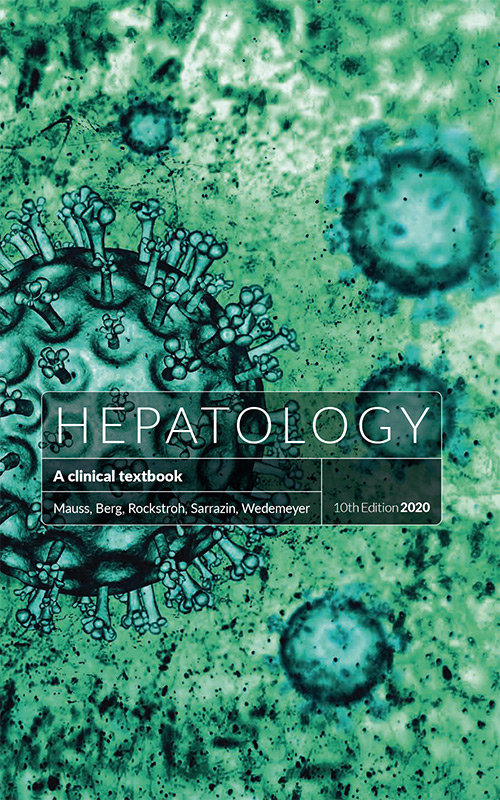Fernando Agüero
Infectious Diseases Service
Hospital Clinic – IDIBAPS
University of Barcelona
Villarroel, 170
08036 Barcelona, Spain
Hikmet Akkiz
Department of Gastroenterology and Hepatology
Çukurova University
School of Medicine
Adana, Turkey
Akif Altinbas
Diskapi Yildirim Beyazit Education and Research Hospital
Gastroenterology Clinic
Ankara, Turkey
Matthias J. Bahr
Dept. of Medicine I
Sana Kliniken Lübeck
Kronsforder Allee 71-73
23560 Lübeck, Germany
Lars P. Bechmann
Department of Gastroenterology and Hepatology,
University Hospital Essen
Hufelandstr. 55
45122 Essen, Germany
Susanne Beckebaum
Department of Internal Medicine, Gastroenterology and Hepatology
St. Josef Krankenhaus
Heidbergweg 22-24
45257 Essen, Germany
Thomas Berg
Sektion Hepatologie
Klinik und Poliklinik für Gastroenterologie & Rheumatologie
Universitätsklinikum Leipzig
Liebigstr. 20
04103 Leipzig, Germany
thomas.berg@medizin.uni-leipzig.de
Albrecht Böhlig
Sektion Hepatologie
Klinik und Poliklinik für Gastroenterologie & Rheumatologie
Universitätsklinikum Leipzig
Liebigstr. 20
04103 Leipzig, Germany
Florian van Bömmel
Sektion Hepatologie
Klinik und Poliklinik für Gastroenterologie & Rheumatologie
Universitätsklinikum Leipzig
Liebigstr. 20
04103 Leipzig, Germany
Christoph Boesecke
Department of Medicine I
University Hospital Bonn
Sigmund-Freud-Strasse 25
53105 Bonn, Germany
Kathrin van Bremen
Department of Medicine I
University Hospital Bonn
Sigmund-Freud-Strasse 25
53105 Bonn, Germany
Ali Canbay
Universitätsklinik für Gastroenterologie, Hepatologie und Infektiologie
Otto-von-Guericke-Universität
Universitätsklinikum Magdeburg A.ö.R.
Leipziger Str. 44
39120 Magdeburg, Germany
Carlos Cervera
Infectious Diseases Service
Hospital Clínic − IDIBAPS
University of Barcelona
Villarroel, 170
08036 Barcelona, Spain
Vito R. Cicinnati
Department of Internal Medicine, Gastroenterology and Hepatology
St. Josef Krankenhaus
Heidbergweg 22-24
45257 Essen, Germany
Markus Cornberg
Dept. of Gastroenterology, Hepatology and Endocrinology
Medical School of Hannover
Carl-Neuberg-Str. 1
30625 Hannover, Germany
Maura Dandri
Center for Internal Medicine
I. Department of Internal Medicine
and
German Center for Infection Research (DZIF)
Hamburg - Lübeck - Borstel - Riems
University Medical Center Hamburg-Eppendorf
Martinistr. 52
20246 Hamburg, Germany
Alejandro Forner
Barcelona Clinic Liver Cancer Group
Liver Unit
Hospital Clínic − IDIBAPS
University of Barcelona
Villarroel, 170
08036 Barcelona, Spain
Juan-Carlos García-Valdecasas
Liver Transplant Unit, Department of Surgery
Hospital Clínic − IDIBAPS
University of Barcelona
Villarroel, 170
08036 Barcelona, Spain
Guido Gerken
Department of Gastroenterology, University Hospital Essen
Hufelandstr. 55
45122 Essen, Germany
PD Dr. Frank Grünhage
Chefarzt Klinik für Gastroenterologie und Onkologie
Von Werth-Straße 5
41515 Grevenbroich, Germany
Christoph Höner zu Siederdissen
Dept. of Gastroenterology, Hepatology and Endocrinology
Medical School of Hannover
Carl-Neuberg-Str. 1
30625 Hannover, Germany
Anna Hüsing
Department of Transplant Medicine
University Hospital Münster
Albert-Schweitzer-Campus 1
48149 Münster, Germany
Iyad Kabar
Department of Transplant Medicine
University Hospital Münster
Albert-Schweitzer-Campus 1
48149 Münster Germany
Bernd Kupfer
Endenicher Strasse 266
53121 Bonn, Germany
Montserrat Laguno
Infectious Diseases Service
Hospital Clínic − IDIBAPS
University of Barcelona
Villarroel, 170
08036 Barcelona, Spain
Frank Lammert
Medical Department II
Saarland University Hospital
Kirrbergerstr. 1
66421 Homburg, Germany
Christian Lange
J. W. Goethe-University Hospital
Medizinische Klinik 1
Theodor-Stern-Kai 7
60590 Frankfurt am Main, Germany
Anna Lligoña
Psychiatry Department
Hospital Clínic − IDIBAPS
University of Barcelona
Villarroel, 170
08036 Barcelona, Spain
Benjamin Maasoumy
Dept. of Gastroenterology,
Hepatology and Endocrinology
Medical School of Hannover
Carl-Neuberg-Str. 1
30625 Hannover, Germany
Michael P. Manns
Dept. of Gastroenterology, Hepatology and Endocrinology
Medical School of Hannover
Carl-Neuberg-Str. 1
30625 Hannover, Germany
Christian Manzardo
Infectious Diseases Service
Hospital Clínic − IDIBAPS
University of Barcelona
Villarroel, 170
08036 Barcelona, Spain
Stefan Mauss
Center for HIV and Hepatogastroenterology
Humboldtstraße 18
40237 Duesseldorf, Germany
stefan.mauss@center-duesseldorf.de
José M. Miró
Infectious Diseases Service
Hospital Clínic − IDIBAPS
University of Barcelona
Villarroel, 170
08036 Barcelona, Spain
Raphael Mohr
Department of Medicine I
University Hospital Bonn
Sigmund-Freud-Strasse 25
53105 Bonn, Germany
Asuncion Moreno
Infectious Diseases Service
Hospital Clínic − IDIBAPS
University of Barcelona
Villarroel, 170
08036 Barcelona, Spain
Claus Niederau
Katholische Kliniken Oberhausen gGmbH, St. Josef Hospital
Department of Internal Medicine
Academic Teaching Hospital of the University
Duisburg-Essen
Mülheimer Str. 83
46045 Oberhausen, Germany
Jörg Petersen
Liver Unit IFI Institute for Interdisciplinary Medicine
Asklepios Klinik St George Hamburg
Lohmühlenstr. 5
20099 Hamburg, Germany
Sven Pischke
Department of Medicine I
University Medical Centre Hamburg-Eppendorf (UKE)
Martinistrasse 52
20246 Hamburg, Germany
Kerstin Port
Dept. of Gastroenterology, Hepatology and Endocrinology
Medical School of Hannover
Carl-Neuberg-Str. 1
30625 Hannover, Germany
Karl-Philipp Puchner
Charité, Campus Virchow-Klinikum,
Universitätsmedizin
Medizinische Klinik m. S. Hepatologie und Gastroenterologie
Augustenburger Platz 1
13353 Berlin, Germany
Antonio Rimola
Liver Transplant Unit – CIBEREHD
Hospital Clínic − IDIBAPS
University of Barcelona
Villarroel, 170
08036 Barcelona, Spain
J. K. Rockstroh
Department of Medicine I
University Hospital Bonn
Sigmund-Freud-Strasse 25
53105 Bonn, Germany
rockstroh@uni-bonn.de
Christoph Sarrazin
Medizinische Klinik II
St. Josefs-Hospital Wiesbaden GmbH
Beethovenstr. 20
65189 Wiesbaden, Germany
CSarrazin@joho.de
Martin Schäfer
Department of Psychiatry
and Psychotherapy
Kliniken Essen-Mitte
Ev. Huyssenstift
Henricistraße 92
45136 Essen, Germany
Carolynne Schwarze-Zander
Department of Medicine I
University Hospital Bonn
Sigmund-Freud-Strasse 25
53105 Bonn, Germany
Philipp Solbach
Dept. of Gastroenterology, Hepatology and Endocrinology
Medical School of Hannover
Carl-Neuberg-Str. 1
30625 Hannover, Germany
Ulrich Spengler
Department of Internal Medicine 1
University Hospitals of Bonn University
Sigmund-Freud-Strasse 25
53105 Bonn, Germany
Christian P. Strassburg
Department of Medicine I
University Hospital Bonn
Sigmund-Freud-Strasse 25
53105 Bonn, Germany
Montserrat Tuset
Pharmacy Department
Hospital Clínic − IDIBAPS
University of Barcelona
Villarroel, 170
08036 Barcelona, Spain
Jan-Christian Wasmuth
Department of Medicine I
University Hospital Bonn
Sigmund-Freud-Strasse 25
53105 Bonn, Germany
Heiner Wedemeyer
Direktor der Klinik für Gastroenterologie, Hepatologie und Endokrinologie
Zentrum Innere Medizin
Medizinische Hochschule Hannover
OE6810
Carl-Neuberg-Str. 1
30625 Hannover, Germany
gastroenterologie@mh-hannover.de
Johannes Wiegand
Sektion Hepatologie
Klinik und Poliklinik für Gastroenterologie & Rheumatologie
Universitätsklinikum Leipzig
Liebigstr. 20
04103 Leipzig, Germany
Stefan Zeuzem
J. W. Goethe-University Hospital
Medizinische Klinik 1
Theodor-Stern-Kai 7
60590 Frankfurt am Main, Germany



